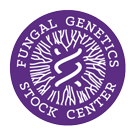Strain: Neurospora crassa
FGSC #9475
Reporting Genes: A ^m99 un-3 nic-2 ad-3B cyh-1
Species: crassa
Allele: m99, 2-17-814, 43002, KH52
Alternate Strain Number: 1848
Depositor: DDP
Linkage Group: IL
Mating Type: A
ref1: Saupe et al 1996 MGG 250:115-122, https://doi.org/10.1007/bf02191831
Genes
